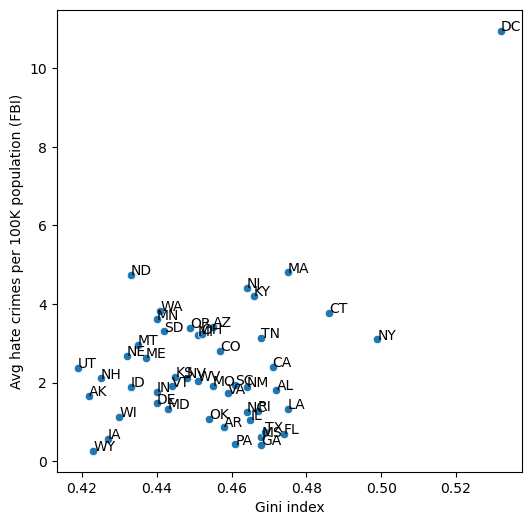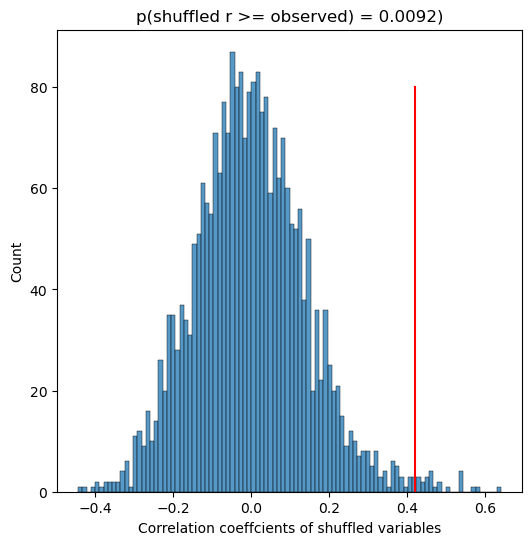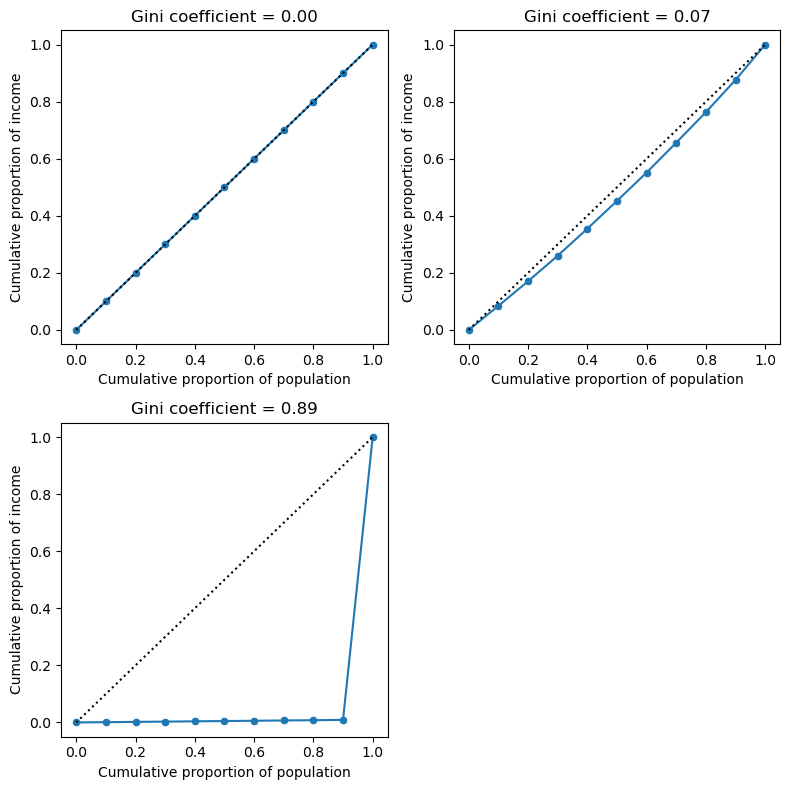Chapter 13: Modeling continuous relationships
Contents
Chapter 13: Modeling continuous relationships#
import pandas as pd
import sidetable
import numpy as np
import matplotlib.pyplot as plt
import seaborn as sns
from scipy.stats import norm, t, binom, ttest_ind
import pingouin as pg
import matplotlib
import rpy2.robjects as ro
from rpy2.robjects.packages import importr
from rpy2.robjects import pandas2ri
pandas2ri.activate()
from rpy2.robjects.conversion import localconverter
%load_ext rpy2.ipython
# import NHANES package
base = importr('NHANES')
base = importr('fivethirtyeight')
with localconverter(ro.default_converter + pandas2ri.converter):
NHANES = ro.conversion.rpy2py(ro.r['NHANES'])
hate_crimes = ro.conversion.rpy2py(ro.r['hate_crimes'])
NHANES = NHANES.drop_duplicates(subset='ID')
NHANES_adult = NHANES.dropna(subset=['Weight']).query('Age > 17 and BPSysAve > 0')
rng = np.random.default_rng(123456)
Figure 13.1#
hateCrimes = hate_crimes.dropna(subset=['avg_hatecrimes_per_100k_fbi'])
plt.figure(figsize=(6,6))
sns.scatterplot(data=hateCrimes, x='gini_index', y='avg_hatecrimes_per_100k_fbi')
plt.xlabel('Gini index')
plt.ylabel('Avg hate crimes per 100K population (FBI)')
for i in hateCrimes.index:
plt.annotate(hateCrimes.loc[i, 'state_abbrev'],
xy=[hateCrimes.loc[i, 'gini_index'],
hateCrimes.loc[i, 'avg_hatecrimes_per_100k_fbi']])

Table 13.1#
# create data for toy example of covariance
# data vary from book example because they are randomly sampled
covDf = pd.DataFrame({'x': [3, 5, 8, 0, 12]})
covDf['y'] = covDf.x + rng.normal(scale=2, size=5).round()
covDf['y_dev'] = covDf.y - covDf.y.mean()
covDf['x_dev'] = covDf.x - covDf.x.mean()
covDf['crossproduct'] = covDf.y_dev * covDf.x_dev
covDf
| x | y | y_dev | x_dev | crossproduct | |
|---|---|---|---|---|---|
| 0 | 3 | 3.0 | -3.4 | -2.6 | 8.84 |
| 1 | 5 | 5.0 | -1.4 | -0.6 | 0.84 |
| 2 | 8 | 9.0 | 2.6 | 2.4 | 6.24 |
| 3 | 0 | 2.0 | -4.4 | -5.6 | 24.64 |
| 4 | 12 | 13.0 | 6.6 | 6.4 | 42.24 |
Hypothesis testing for correlations#
corGiniHC = pg.corr(hateCrimes['gini_index'],
hateCrimes['avg_hatecrimes_per_100k_fbi'])
corGiniHC
| n | r | CI95% | p-val | BF10 | power | |
|---|---|---|---|---|---|---|
| pearson | 50 | 0.421272 | [0.16, 0.63] | 0.002314 | 16.02 | 0.874232 |
Figure 13.2#
def shuffleCorr(x, y):
x = x.copy().values
rng.shuffle(x)
return(np.corrcoef(x, y.values)[0, 1])
nruns = 2500
shuffleDist = []
for i in range(nruns):
shuffleDist.append(shuffleCorr(hateCrimes['gini_index'],
hateCrimes['avg_hatecrimes_per_100k_fbi']))
cc = corGiniHC['r'][0]
plt.figure(figsize=(6,6))
sns.histplot(shuffleDist, bins=100)
plt.title(f'p(shuffled r >= observed) = {np.mean(np.array(shuffleDist) >= cc)})')
plt.plot([cc, cc], [0, 80], color='red')
plt.xlabel("Correlation coeffcients of shuffled variables")
Text(0.5, 0, 'Correlation coeffcients of shuffled variables')

Figure 13.3#
n = 10
dfOutlier = pd.DataFrame({'x': rng.normal(size=n)})
dfOutlier['y'] = dfOutlier.x * -1
dfOutlier.x[0] = 10
dfOutlier.y[0] = 10
cc = dfOutlier.corr().iloc[0, 1]
sns.scatterplot(data=dfOutlier, x='x', y='y')
plt.title(f"r = {cc:.02f} (without outlier: r = -1)")
Text(0.5, 1.0, 'r = 0.82 (without outlier: r = -1)')

Spearman correlation test#
corGiniHCSpearman = pg.corr(hateCrimes['gini_index'],
hateCrimes['avg_hatecrimes_per_100k_fbi'],
method='spearman')
corGiniHCSpearman
| n | r | CI95% | p-val | power | |
|---|---|---|---|---|---|
| spearman | 50 | 0.032618 | [-0.25, 0.31] | 0.822078 | 0.055533 |
Figure 13.6#
fig, ax = plt.subplots(2, 2, figsize=(8,8))
def lorenzCurve(values, ax):
values = values.copy()
values.sort()
n = values.shape[0]
valuesSum = values.sum()
lc = [0]
p = [0]
for i in range(1, n + 1):
lc.append(values[:(i)].sum()/valuesSum)
p.append((i) / n)
df = pd.DataFrame({'lc': lc, 'p': p})
S = df.lc.sum()
giniCoef = 1 + (1 - 2 * S) / n
sns.lineplot(data=df, x='p', y='lc', ax=ax)
sns.scatterplot(data=df, x='p', y='lc', ax=ax)
ax.plot([0, 1], [0, 1], 'k:')
ax.set_xlabel('Cumulative proportion of population')
ax.set_ylabel('Cumulative proportion of income')
ax.set_title(f'Gini coefficient = {giniCoef:.02f}')
return(df, giniCoef)
income = np.ones(10) * 40000
df, gc = lorenzCurve(income, ax[0][0])
income = rng.normal(loc=40000, scale=5000, size=10)
df, gc = lorenzCurve(income, ax[0][1])
income = np.ones(10) * 40000
income[0] = 40000000
df, gc = lorenzCurve(income, ax[1][0])
ax[1][1].set_visible(False)
plt.tight_layout()

Bayesian correlation analysis#
There is no great equivalent to BayesFactor in Python, so we will use it via the R magic bridge.
%%R -i hateCrimes
library(BayesFactor)
library(bayestestR)
bayesCor <- correlationBF(
hateCrimes$avg_hatecrimes_per_100k_fbi,
hateCrimes$gini_index
)
print(bayesCor)
bayesCorPosterior <- describe_posterior(bayesCor)
print(bayesCorPosterior)
R[write to console]: Loading required package: coda
R[write to console]: Loading required package: Matrix
R[write to console]: ************
Welcome to BayesFactor 0.9.12-4.4. If you have questions, please contact Richard Morey (richarddmorey@gmail.com).
Type BFManual() to open the manual.
************
Bayes factor analysis
--------------
[1] Alt., r=0.333
:
20.85446
±
0
%
Against denominator:
Null, rho = 0
---
Bayes factor type:
BFcorrelation
,
Jeffreys-beta*
Summary of Posterior Distribution
Parameter | Median | 95% CI | pd | ROPE | % in ROPE | BF | Prior
----------------------------------------------------------------------------------------------
rho | 0.38 | [0.11, 0.58] | 99.80% | [-0.05, 0.05] | 0% | 20.85 | Beta (3 +- 3)
